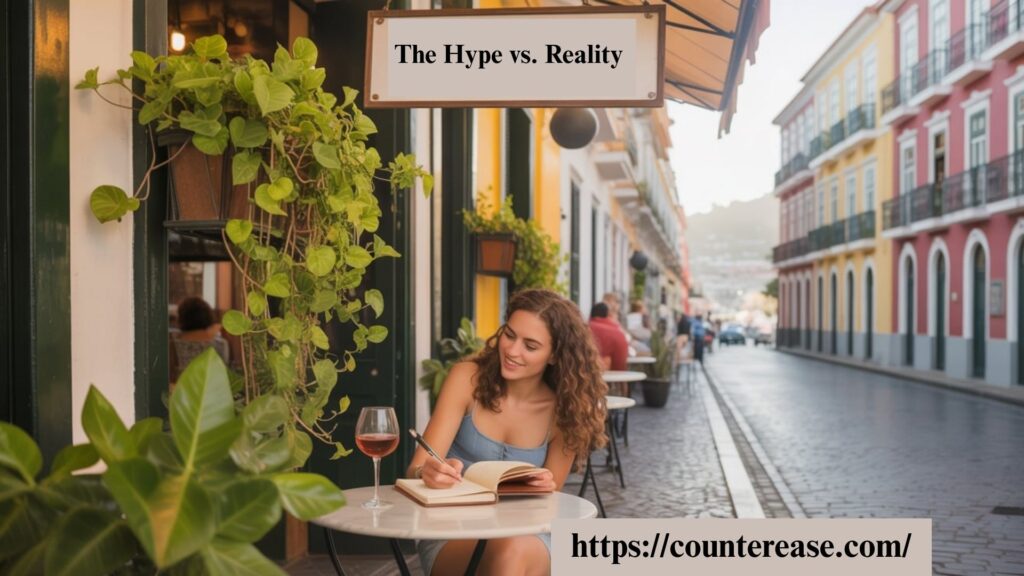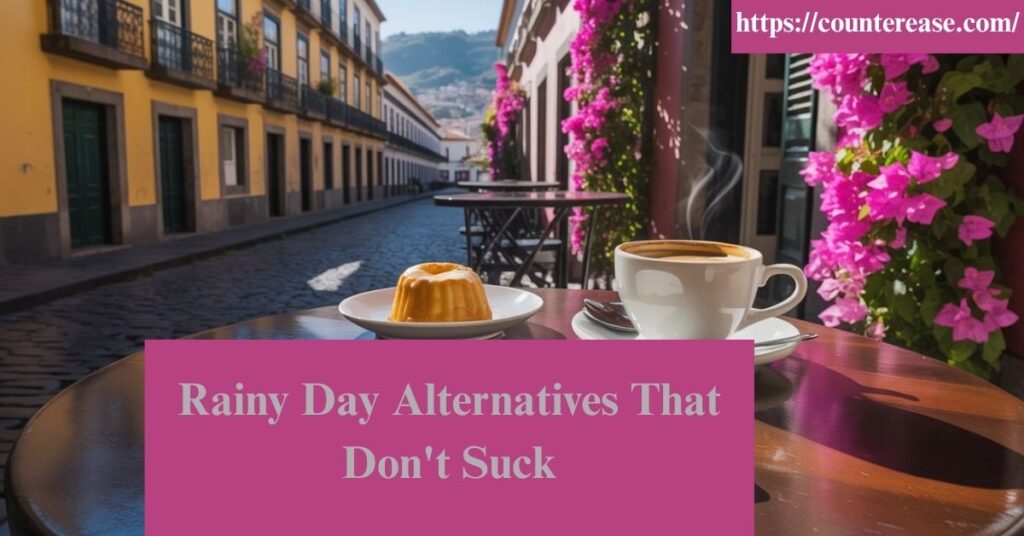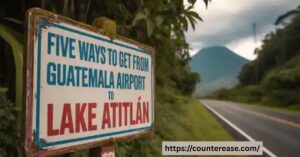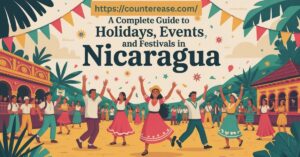An Honest Review of Madeira offers a transparent and experience-based perspective on one of Europe’s most breathtaking island destinations. Unlike sugar-coated travel brochures, this honest review of madeira dives into the reality of visiting Madeira—highlighting its natural beauty, unpredictable weather, winding roads, and the emotions travelers experience while exploring its mountaintops and coastline. This kind of honest review of madeira doesn’t just showcase the positives; it balances the awe with the challenges, offering genuine insight for travelers seeking truth, not just hype.
What makes Madeira unforgettable isn’t just the views—it’s the feeling of standing above the clouds at sunrise, the thrill of navigating steep, cliffside roads, and the surprise of sunshine breaking through stormy skies. It’s a raw, emotional journey that rewards those with a sense of adventure and patience. This honest review of madeira captures that spirit without filters, making it feel as if you’re right there with every twist, turn, and gasp.
If you’re seeking more than a highlight reel, this honest-review-of-madeira reveals what it’s truly like to explore the island—from misty mountains and volcanic cliffs to the warmth of local traditions. Whether you’re planning your first visit or wondering if it lives up to the buzz, this in-depth account brings clarity, charm, and context to your decision.
The Hype vs. Reality
Madeira has exploded across social media feeds, with travelers raving about dramatic coastline views and sunrise above the clouds experiences. But does honest review of madeira Portuguese island actually live up to the Instagram-worthy expectations? After extensive research and countless traveler accounts, here’s what you really need to know (honest review of madeira).

This mountainous scenery paradise sits 600 miles off Morocco’s coast. It’s not your typical beach destination—and that’s exactly why it’s capturing hearts worldwide. The island’s subtropical forests and unique levadas (irrigation trails) create experiences you won’t find anywhere else.
However, the tourism boards won’t tell you about the windy Madeira weather that can derail your plans. They skip the part about navigating narrow mountain roads or dealing with crowds at sunrise viewpoints.
Who should visit Madeira? Adventure seekers who embrace unpredictability. Nature photographers with patience. Hikers craving diverse terrain.
Who should skip it? Beach loungers expecting Caribbean vibes. Travelers needing guaranteed sunshine. Anyone stressed by constant weather changes.
Getting There: The Logistics Nobody Talks About
Flight Costs and Seasonal Reality
Madeira flights vary dramatically by season. European connections through Lisbon or London typically cost:
- Peak season (June-August): €300-600 from major European cities
- Shoulder season (April-May, September-October): €200-400
- Winter months: €150-300
The infamous Funchal Airport landing deserves its reputation. Pilots need special certification for this approach, with crosswinds making arrivals genuinely thrilling. Don’t panic—it’s completely safe, just spectacular.
Transportation from Airport
From Cristiano Ronaldo International Airport, your options include:
| Transport Method | Cost | Duration | Best For |
|---|---|---|---|
| Taxi to Funchal | €25-35 | 20-30 min | Convenience |
| Airport Bus | €5 | 45 min | Budget travel |
| Rental Car | €20-40/day | 20 min | Island exploration |
| Hotel Transfer | €15-25 | 30 min | Pre-booked stays |
Pro tip: Book rental cars well in advance. Drive around Madeira becomes essential for reaching hidden viewpoints and avoiding tourist crowds.
Weather Decoded: Beyond the Tourism Board Claims
The Microclimate Truth
Madeira weather changes every few kilometers. The island weather forecast might show rain in Funchal while mountains above clouds enjoy brilliant sunshine simultaneously.
Northern coast: Typically 5-10°C cooler and wetter than the south. Expect frequent cloud inversion experiences here.
Southern coast: Drier, sunnier, but still unpredictable. Windy Madeira weather affects coastal areas year-round.
Mountain regions: Temperature drops 2°C per 300m elevation gain. Pack layers—always.
Monthly Weather Reality Check
January-March: Tropical climate meets European winter. Rain likely, but shorter bursts. Perfect for levadas without crowds.
April-May: Ideal hiking weather. Special sunrise view opportunities increase. Flowers bloom magnificently.
June-August: Hottest and busiest. Above the clouds sunrise experiences require early starts (4 AM) to beat crowds.
September-November: Golden season. Excellent Madeira views with manageable tourist numbers.
December: Flower festival preparations begin. Weather remains mild but unpredictable.
See Also: The Guatemalan Quetzal: A Guide to Money in Guatemala
Accommodation Strategy: Where You Sleep Matters
Funchal: Urban Convenience vs Tourist Crowds
Funchal offers the most amenities but comes with trade-offs. The Mercado dos Lavradores provides authentic local flavor, while the harbor area gets overcrowded during cruise ship arrivals.
Best neighborhoods:
- Old Town: Character-filled but noisy
- Hotel Zone: Convenient but sterile
- Monte: Elevated views, Monte toboggan access
Budget range: €40-200 per night depending on season and location.
Câmara de Lobos: Local Flavor with Accessibility
This fishing village offers authentic Madeira experiences without Funchal’s tourist density. Espetada restaurants here serve locals, not just visitors. Winston Churchill painted these very streets—his easel spot remains marked.
Accommodation costs: €35-120 per night. Limited options require advance booking.
Camping Legitimately: Legal Spots and Wild Camping Truths
Official camping exists at Parque de Campismo do Porto Moniz (€8-12 per night). Wild camping technically isn’t legal, but enforcement remains minimal in remote mountainous scenery areas.
Essential camping gear:
- Waterproof everything (seriously, everything)
- Warm sleeping bags (temperatures drop significantly)
- Portable stove (wood fires often restricted)
The Legendary Landscapes (And How to Actually See Them)
Cloud Inversions Demystified
Cloud inversion experience happens when warm air traps cooler air below, creating a sea of clouds beneath mountain peaks. Madeira offers some of Europe’s most reliable inversions.
Best spots for cloud inversions:
- Pico do Areeiro (1,818m) – Most accessible
- Pico Ruivo (1,862m) – Highest point, requires hiking
- Cabo Girão (580m) – Lower altitude option
Timing secrets: Arrive 30 minutes before sunrise. Mountains above clouds views peak between 6:30-8:00 AM. Weather apps lie—check webcams instead.
Pico do Areeiro: Sunrise Logistics and Crowd Management
The road to Pico do Areeiro opens 24/7, but parking fills fast during peak season. Above the clouds sunrise attracts hundreds daily.
Crowd-beating strategy:
- Arrive by 5:30 AM (earlier in summer)
- Park at the lower lot if main area fills
- Bring headlamps and warm clothing
- Check wind forecasts—extreme conditions close the road
Alternative viewpoints: PR1.2 trail leads to Pico Ruivo for fewer crowds but requires 2-3 hours hiking.
Fanal Forest: Laurisilva Magic and Foggy Disappointments
The Laurisilva forest represents 20 million years of evolution. These ancient trees create mystical atmospheres, especially during fog. However, fog also ruins photography and hiking experiences.
Best Fanal conditions:
- Light fog enhances mystical feeling
- Heavy fog eliminates visibility entirely
- Clear days showcase the forest structure
Photography tip: Overcast conditions work better than sunny skies for capturing the forest’s ethereal quality.
Levada Adventures: Trail Selection Reality
Understanding Levadas
Levadas aren’t just hiking trails—they’re 16th-century irrigation channels still supplying the island’s water. These narrow paths wind through subtropical forests, along cliff faces, and into mountain tunnels.
Essential levada gear:
- Waterproof headlamp (tunnels can be 200m long)
- Non-slip hiking boots
- Rain gear (microclimate changes)
- Emergency whistle
Beginner-Friendly: Levada do Caldeirão Verde
This hiking trail offers spectacular waterfalls with manageable difficulty. The 13km round trip takes 4-6 hours, passing through four tunnels and ending at a stunning 100m waterfall.
Trail conditions: Well-maintained path, some narrow sections with drop-offs. Caldeirão Verde remains accessible year-round but gets muddy after rain.
Starting point: Queimadas Forest Park (free parking, restroom facilities)
Intermediate Challenges: PR6 and PR8 Honest Assessments
PR6 (Levada das 25 Fontes): 11km round trip through Laurisilva forest to 25 natural springs. Moderate difficulty with one challenging descent.
PR8 (Vereda da Ponta de São Lourenço): Peninsula walk offering dramatic coastline views. Exposed to wind and sun—bring protection for both.
Success rates: 85% completion for PR6, 70% for PR8 (weather dependent)
Advanced Routes: Pico Ruivo Technical Requirements
Pico Ruivo represents Madeira’s ultimate hiking challenge. Multiple approach routes exist:
- From Achada do Teixeira: 2.8km, 2-3 hours total
- From Pico do Areeiro: 7km, 4-6 hours, most scenic
- From Encumeada: 11km, 6-8 hours, most challenging
Technical requirements: Sure footing, basic scrambling ability, weather awareness. The above the clouds sunrise from Pico Ruivo surpasses Pico do Areeiro but demands significantly more effort.
Rainy Day Alternatives That Don’t Suck

Indoor Activities Beyond Shopping Malls
Windy Madeira weather and rain don’t have to ruin your trip. Smart alternatives exist beyond tourist trap shopping centers.
Blandy’s Wine Lodge: Madeira wine education in historic Funchal cellars. The fortified wine tasting includes 150-year-old vintages. €15 tours run hourly.
CR7 Museum: Even non-football fans appreciate Cristiano Ronaldo’s local impact. Interactive exhibits, trophy displays, and Madeira cultural connections. €5 entry, open daily.
Monte Palace Gardens: Weather-Resistant Beauty
These botanical gardens offer covered walkways and indoor sections. The tropical climate supports unfamiliar plants from five continents. Asian-themed areas provide shelter during sudden downpours.
Practical details: €12.50 entry, free with Monte toboggan tickets. Allow 2-3 hours for complete exploration.
Local Cooking Classes and Cultural Workshops
Learn espetada preparation, bolo do caco baking, or traditional Poncha mixing. These hands-on experiences connect you with local culture regardless of weather.
Recommended classes:
- Cooking Madeira (€45, 3 hours)
- Cultural Kitchen (€35, 2 hours)
- Wine and Dine (€55, 4 hours including Madeira wine)
Off-the-Beaten-Path Experiences
Off-Roading Realities: 4WD Requirements and Rental Options
Drive around Madeira takes new meaning with 4WD access to remote viewpoints. Standard rental cars handle paved roads fine, but mountainous scenery adventures require proper vehicles.
4WD rental costs: €45-80 per day (vs €20-40 for standard cars)
Essential off-road destinations:
- Fanal plateau via ER209
- Paul da Serra highland routes
- Porto da Cruz via mountain tracks
- Remote levadas starting points
Secret Viewpoints: Locals’ Favorite Spots Tourists Miss
Cabo Girão gets the publicity, but locals prefer these Madeira views:
Boca dos Namorados: Dramatic coastline views without crowds. Located between Jardim do Mar and Calheta.
Miradouro da Portela: Special sunrise view spot overlooking Porto da Cruz and the northern coast.
Ponta do Rosto: Above the clouds sunrise alternative when Pico do Areeiro crowds become unbearable.
See Also: The Safest and Most Dangerous Cities in Central America
Traditional Villages: Authentic Culture vs Staged Experiences
Santana’s thatched houses photograph beautifully but represent tourist-focused preservation. For authentic village life, visit:
Ponta Delgada: Working fishing community with genuine espada (scabbardfish) restaurants.
Jardim da Serra: Mountain village where sugar cane honey production continues traditionally.
Arco de São Jorge: Rose cultivation center supplying Madeira’s famous flower festival.
Food Scene Beyond Tourist Menus
Poncha: The Real Local Hangouts
Traditional Poncha (sugarcane spirit, honey, lemon) varies dramatically between tourist bars and local hangouts. Authentic versions use sugar cane honey and fresh fruit.
Best authentic Poncha bars:
- Taberna Real (Funchal Old Town)
- Poncha da Coral (Câmara de Lobos)
- Bar do Avô (Machico)
Poncha variations: Passion fruit, tangerine, or traditional lemon. Alcohol content ranges 15-20%.
Espetada: Where Locals Eat vs Tourist Traps
Espetada (beef skewers) quality varies enormously. Tourist restaurants serve smaller portions at inflated prices. Local spots offer massive skewers with bolo do caco bread.
Local favorites:
- Quinta do Furão (Santana)
- Restaurante O Lagar (Porto da Cruz)
- Adega da Quinta (Estreito de Câmara de Lobos)
Price comparison: Tourist areas €18-25, local spots €12-18 for superior quality and portion sizes.
Fresh Fish Markets and Street Food Gems
Mercado dos Lavradores (Funchal) offers the island’s best fresh fish selection. Espada (scabbardfish) appears on every menu but tastes completely different when truly fresh.
Market timing: Arrive before 10 AM for best selection. Friday and Saturday offer the widest variety.
Hidden street food: Bolo de mel vendors near the cathedral sell authentic honey cakes. Passion fruit pudding stalls appear at weekend markets.
Transportation Decoded
Driving Realities: Navigation and Parking Nightmares
Drive around Madeira means navigating roads built for donkeys, not cars. Tunnels carved through mountains create one-lane bottlenecks. Parking in popular viewpoints fills before sunrise.
Essential driving tips:
- Rent smallest car possible for mountain roads
- Download offline maps (island weather forecast affects GPS signals)
- Carry emergency food and water
- Learn Portuguese parking signs
Fuel costs: €1.40-1.60 per liter. Plan fuel stops—stations close early outside Funchal.
Bus System Secrets: Routes Tourists Never Discover
Madeira’s bus network (Horários do Funchal) reaches surprising destinations. Tourist information rarely mentions useful routes beyond airport connections.
Hidden useful routes:
- Line 20: Funchal to Curral das Freiras (mountain village)
- Line 6: Monte circuit including botanical gardens
- Line 142: Ribeira Brava to Paul da Serra (highland plateau)
Bus passes: €4 day pass, €20 weekly pass. Significantly cheaper than taxis for multi-stop exploration.
Cable Cars and Funiculars: Worth It or Tourist Traps?
Monte Cable Car: €11 one-way, €16 return. Spectacular Madeira views but gets crowded. Combine with Monte toboggan for €27 total.
Botanical Garden Cable Car: €8 one-way, gorgeous subtropical forests views. Less crowded alternative.
Achadas da Cruz Cable Car: €5, shortest ride but dramatic dramatic coastline perspectives.
Value assessment: Worth it for unique viewpoints and transportation convenience, not just the ride experience (honest review of madeira).
Budget Breakdown: Real Numbers
Daily Spending by Travel Style
Budget travel (€40-60 per day):
- Accommodation: €20-35 (camping/hostels)
- Food: €15-20 (local restaurants, Poncha bars)
- Transport: €5-10 (buses, some taxi)
- Activities: €5-15 (hiking trails, free Madeira views)
Mid-range travel (€80-120 per day):
- Accommodation: €50-80 (guesthouses, quintas)
- Food: €25-35 (espetada restaurants, Madeira wine)
- Transport: €15-25 (car rental, fuel)
- Activities: €15-30 (cable cars, botanical gardens)
Luxury travel (€200-400 per day):
- Accommodation: €150-300 (5-star hotels, spa resorts)
- Food: €40-70 (fine dining, fortified wine tastings)
- Transport: €30-50 (premium car rental, private transfers)
- Activities: €30-80 (guided tours, whale tours, canyoning)
Hidden Costs Nobody Warns About
Tunnel tolls: €1.50-3.00 per tunnel on some routes Parking fees: €1-3 per hour in popular viewpoints
Equipment rental: €20-30 for proper hiking gear Weather contingency: €50+ for alternative indoor activities
Money-saving hacks:
- Fábrica Santo António offers factory tour cookies cheaper than tourist shops
- Local sugar cane honey costs half the tourist area prices
- Sustainable tourism initiatives offer discounts for eco-friendly choices
The Honest Verdict Matrix
Madeira Excels For:
Serious hikers seeking diverse terrain: Levadas, Pico Ruivo, and coastal paths offer unmatched variety. Laurisilva forest provides unique ecosystems found nowhere else in Europe.
Photography enthusiasts with patience: Cloud inversion experience, dramatic coastline, and mountainous scenery create endless opportunities. Above the clouds sunrise shots rival anything worldwide.
Travelers embracing weather unpredictability: Windy Madeira weather adds adventure. Island weather forecast unreliability forces flexibility and spontaneous discoveries.
Nature lovers prioritizing landscapes over beaches: Subtropical forests, botanical gardens, and volcanic formations dominate sandy shores.
Madeira Disappoints When:
You expect consistent sunshine: Tropical climate doesn’t guarantee constant sun. Special sunrise view opportunities depend entirely on weather cooperation.
Beach vacations are your priority: Limited sandy beaches, mostly black volcanic sand. Ocean temperatures remain cool year-round.
You need extensive nightlife options: Traditional Poncha bars close early. Limited club scene compared to other island destinations.
Accessibility challenges limit mobility: Hiking trails require good physical condition. Mountainous scenery access demands significant walking.
Skip Madeira If:
You hate driving mountain roads: Drive around Madeira becomes essential for exploration. Narrow, winding roads stress nervous drivers.
Weather changes stress you out: Microclimate variations require constant adaptation. Pack for four seasons daily.
You prefer all-inclusive resort experiences: Slow tourism and exploration define Madeira travel. Resort-style holidays feel limiting here.
Your budget can’t handle European island pricing: Costs exceed mainland Portugal significantly. Sustainable tourism often commands premium pricing.
Planning Your Perfect Itinerary

Three-Day Minimum: Essential Highlights Only
Day 1: Funchal exploration, Mercado dos Lavradores, Monte toboggan Day 2: Pico do Areeiro sunrise, Fanal Forest, coastal Madeira views Day 3: Levadas hike (Caldeirão Verde), traditional Poncha tasting
Week-Long Sweet Spot: Balanced Exploration
Add Pico Ruivo hike, whale tours, canyoning, extensive botanical gardens visits, espetada restaurant tour, and dramatic coastline drives.
Two Weeks: Deep Dive Possibilities
Include remote levadas, off-roading adventures, Laurisilva forest camping, flower festival participation (seasonal), Madeira wine cellar tours, and sustainable tourism project visits.
Seasonal Considerations for Different Travel Goals
Peak hiking season (April-October): Best hiking trails conditions, crowded above the clouds sunrise spots
Flower season (April-May): Flower festival, botanical gardens at peak beauty, moderate crowds
Wine harvest (August-September): Fortified wine production tours, traditional celebrations, ideal weather
Off-season (November-March): Sustainable tourism focus, fewer crowds, variable weather requiring flexibility
Reality Check
Madeira deserves its growing reputation among adventure travelers and nature photographers. The dramatic coastline, mountainous scenery, and unique cloud inversion experience create genuinely spectacular moments.
However, the marketing glosses over weather unpredictability and the physical demands of accessing the best Madeira views. Windy Madeira weather isn’t just a quirk—it actively shapes daily plans.
The island rewards flexible travelers who embrace sustainable tourism principles and slow tourism pacing. Rush through Madeira, and you’ll miss the special sunrise view moments that create lasting memories.
Bottom line recommendation: Visit Madeira if you’re prepared for weather-dependent adventures and don’t mind working for the payoff. The mountains above clouds experiences and subtropical forests encounters justify the effort—but only if you approach the island with realistic expectations and proper preparation.
Madeira isn’t for everyone, and that’s exactly what makes it special for those who click with its dramatic, ever-changing personality.
See Also: A Full Guide to the Cost of Living in Nicaragua
FAQs
1. Are there any entry requirements for tourists?
Madeira is open for tourists from most countries, including the UK. There are currently no COVID-era restrictions in place. No visa is needed for stays under 90 days for many nationalities.
2. When is the best time for hiking or whale watching?
Spring (April‑May) and autumn (September‑October) offer mild weather, fewer crowds, and excellent visibility for hiking and dolphin/whale tours.
3. Are there fees for hiking famous trails?
Yes, from January 2025, visitors over 12 must pay around €3 per hike on popular levada routes; fines up to €50 apply if unpaid. The fee supports sustainable tourism.
4. What’s the climate like in Funchal?
Funchal enjoys a mild subtropical climate year-round. Summer highs range from 22–25 °C; winter stays around 16–20 °C. The south is sunnier, while the north can be foggy or rainy.
5. How do I get around—driving or public transport?
Renting a car is popular for flexibility, but mountainous roads can be steep. Public buses are reliable for many routes, and Funchal is walkable.
Conclusion
This honest-review-of-madeira shows that the island is both beautiful and surprising. From high mountains to deep valleys, Madeira offers views that feel unreal. But it’s not always perfect. The weather can change fast, and the roads may be hard to drive. Still, the charm of this island makes every moment worth it. You just need to plan well and stay flexible.
If you love nature, peace, and adventure, this honest-review-of-madeira proves the island could be perfect for you. It’s not only about pretty photos—it’s about real feelings and experiences. Madeira gives you both calm and thrill. And with honest tips and true stories, this guide helps you see what to expect. So, when you go, you’ll feel ready for both the good and the unexpected.

Asia Jenni is a passionate travel writer and expert author on CounterEase.com. With a deep love for exploration, she shares insightful travel guides, tips, and destination recommendations, helping travelers discover new places with ease. Her expertise in curating memorable trips and her engaging writing style make her a valuable resource for anyone looking to plan their next adventure.








